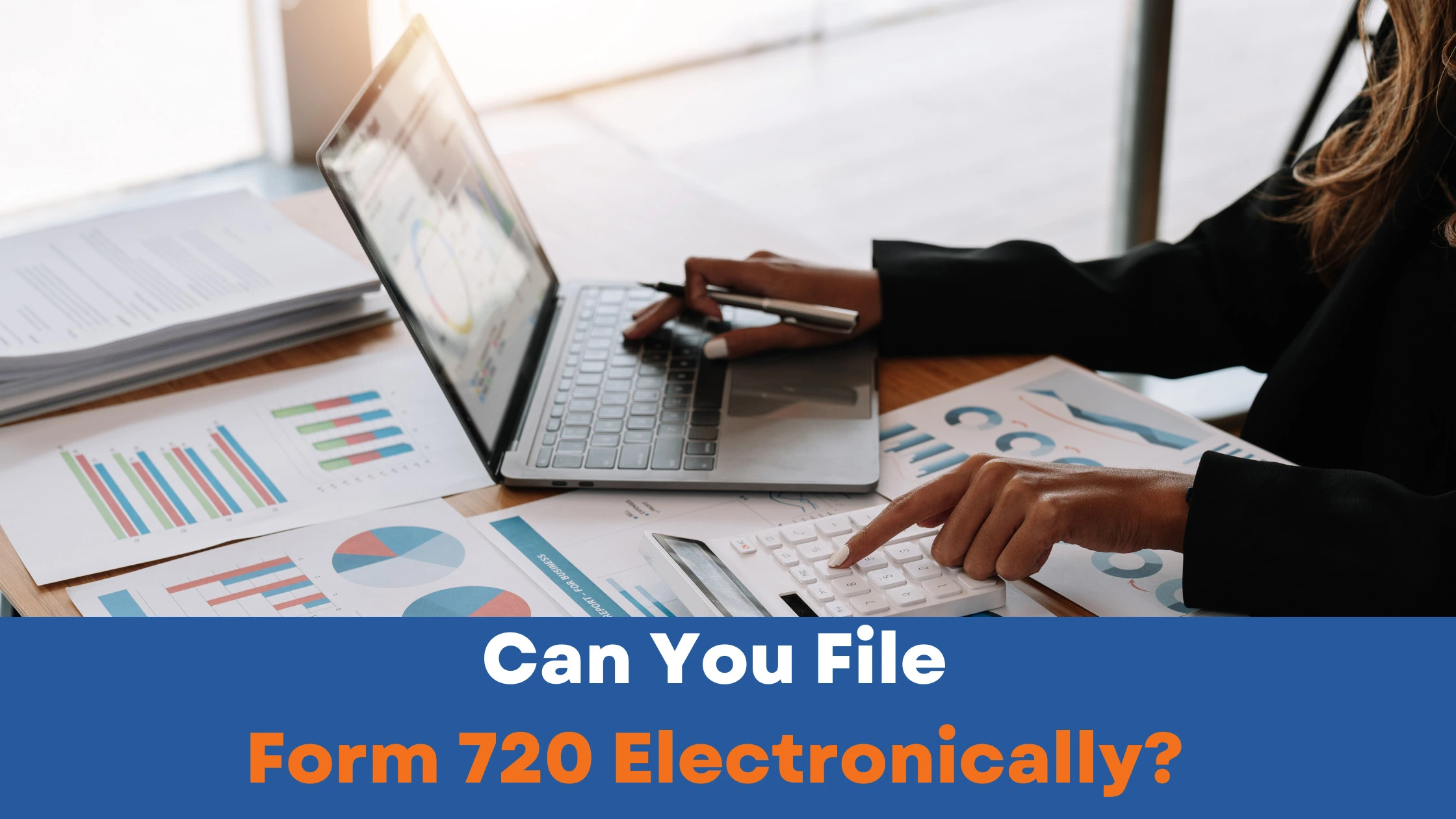
Filing Form 720 Electronically Explained
Filing Form 720 taxes can be a complex task for businesses, and raise a lot of questions. One common inquiry is whether it's possible to file Form 720 electronically.
In this blog post, we'll delve into the world of Form 720, addressing key questions, and potential challenges, and providing a step-by-step guide for electronic filing.
Understanding Form 720
Before we explore the electronic filing option, let's briefly understand what Form 720 entails. Form 720 is a quarterly federal excise tax return used by businesses to report and pay excise taxes to the IRS. Excise taxes are levied on specific goods, services, or activities, such as fuel sales, environmental taxes, communication taxes, etc.
The Traditional Paper Filing Process
To set the stage, let's touch on the conventional method of filing Form 720 – the paper filing process. Many businesses are accustomed to filling out physical forms and sending them to the IRS via mail. This process has its challenges, including potential delays, the risk of errors, and the sheer time and effort involved.
Can Form 720 Be Filed Electronically?
1. Electronic Filing Overview
One of the primary questions businesses have is whether they can file Form 720 electronically. The answer is yes! The IRS has embraced technology, and electronic filing is a viable option for businesses looking for a more efficient and streamlined approach to fulfilling their tax obligations.
2. Advantages of 720 Electronic Filing
a. Speed and Efficiency
One of the key advantages of electronic filing is the speed at which the process can be completed. Businesses can submit their Form 720 electronically, reducing the time it takes for the IRS to receive and process the information.
b. Reduced Errors
Electronic filing minimizes the risk of errors commonly associated with manual data entry. The IRS system validates the information in real-time, reducing the likelihood of mistakes that could lead to penalties or delays.
c. Confirmation and Tracking
When you file electronically, you receive immediate confirmation that your submission has been received. This allows for better tracking and peace of mind, knowing that your tax documents are in the IRS's hands.
3. Electronic Filing Requirements
a. E-filing Software
To file Form 720 electronically, businesses typically use IRS-approved e-filing software. This software ensures that the submitted information complies with IRS specifications, enhancing the accuracy of the filing.
b. Electronic Payment Options
Electronic filing often goes hand in hand with electronic payment options. Businesses can make their excise tax payments electronically, offering a secure and convenient way to fulfill their tax obligations.
Potential Challenges and Solutions
1. Security Concerns
Some businesses may express concerns about the security of electronic filing. It's crucial to choose reputable e-filing software that employs robust security measures to safeguard sensitive financial information.
2. Technological Barriers
Not all businesses may be equally adept at using technology. Overcoming technological barriers may involve providing training or seeking assistance from professionals who specialize in tax filing software. We, simple 720, have been in the marketing since 2009.
3. Compatibility Issues
Businesses should ensure that their chosen e-filing software is compatible with the specific requirements of Form 720. This involves staying informed about updates and any changes in IRS guidelines regarding electronic filing.
Step-by-Step Guide to Electronic Filing
1. Choose IRS-Approved E-Filing Software
Selecting the right e-filing software is the first step. Ensure that the software is approved by the IRS and provides the necessary features for accurately completing and submitting Form 720.
2. Gather Required Information
Before diving into the electronic filing process, gather all the required information. This includes details about excise taxes, business transactions, and any other relevant financial data.
3. Input Information into the Software
Enter the gathered information into the e-filing software following the prompts and instructions. Be conscious to avoid errors and ensure that all relevant fields are completed accurately.
4. Review and Confirm
Most e-filing software includes a review feature. Take advantage of this to thoroughly review the information before confirming the submission. This step is crucial in catching any potential errors.
5. Submit Electronically
Once the information is reviewed and confirmed, submit the Form 720 electronically. The software will generate a confirmation receipt, providing evidence that the IRS has received the filing.
6. Make Electronic Payments
If there are excise tax payments associated with the filing, use the electronic payment options provided by the software to complete the transaction securely.
The Wrap
Electronic filing of Form 720 offers businesses a more efficient and convenient way to fulfill their excise tax obligations. While there may be challenges and questions along the way, the benefits of speed, accuracy, and immediate confirmation make it a worthwhile endeavor.
Choosing the right IRS Authorized e-file provider like Simple 720 can simplify the tax filing process, allowing businesses to focus more on their core operations and less on paperwork.